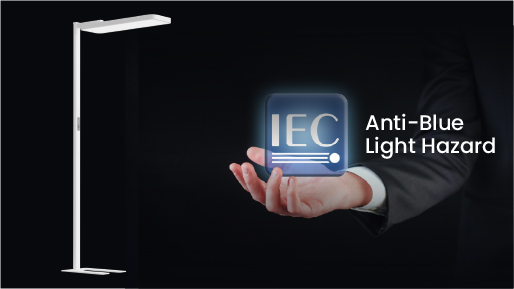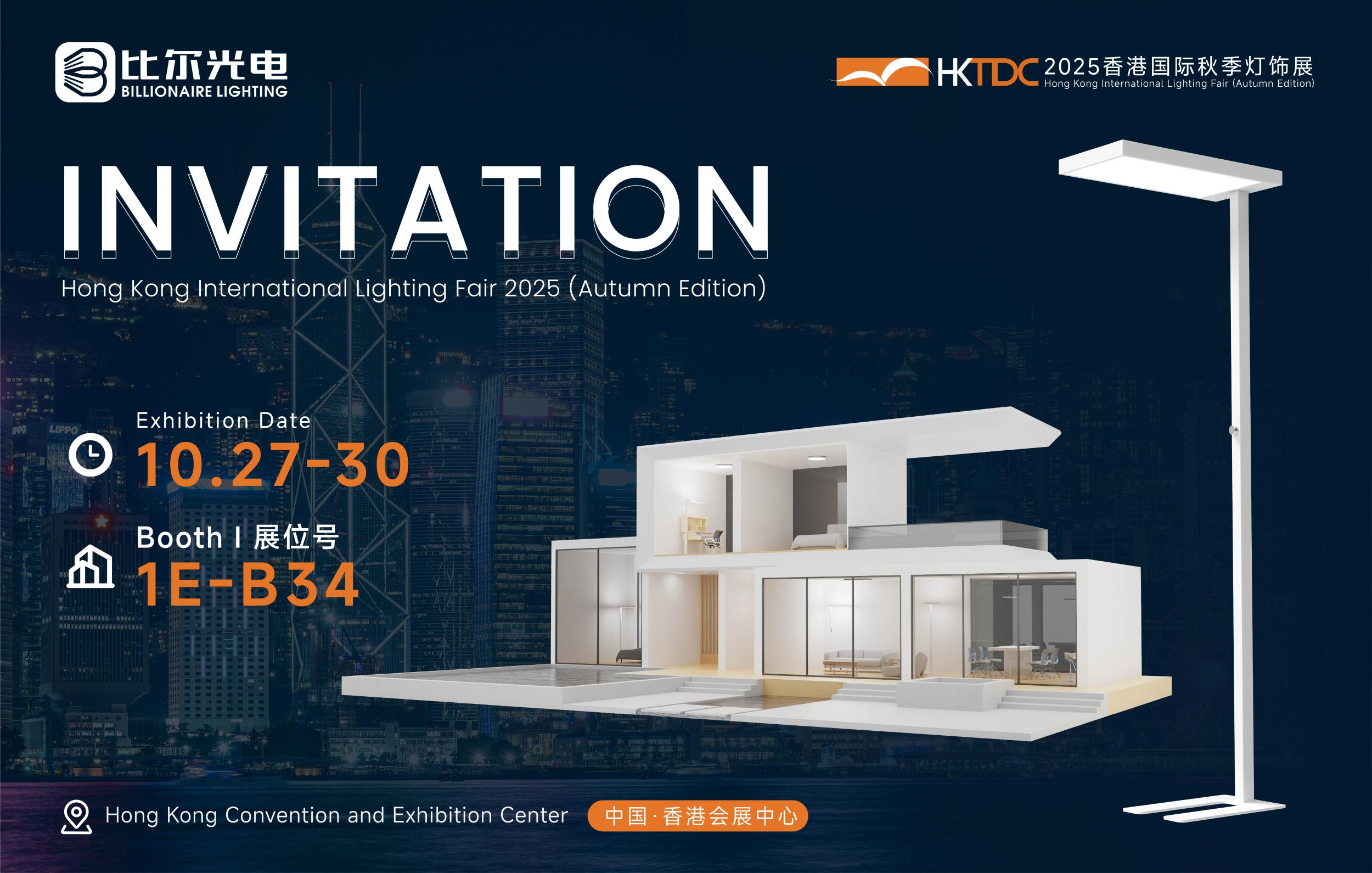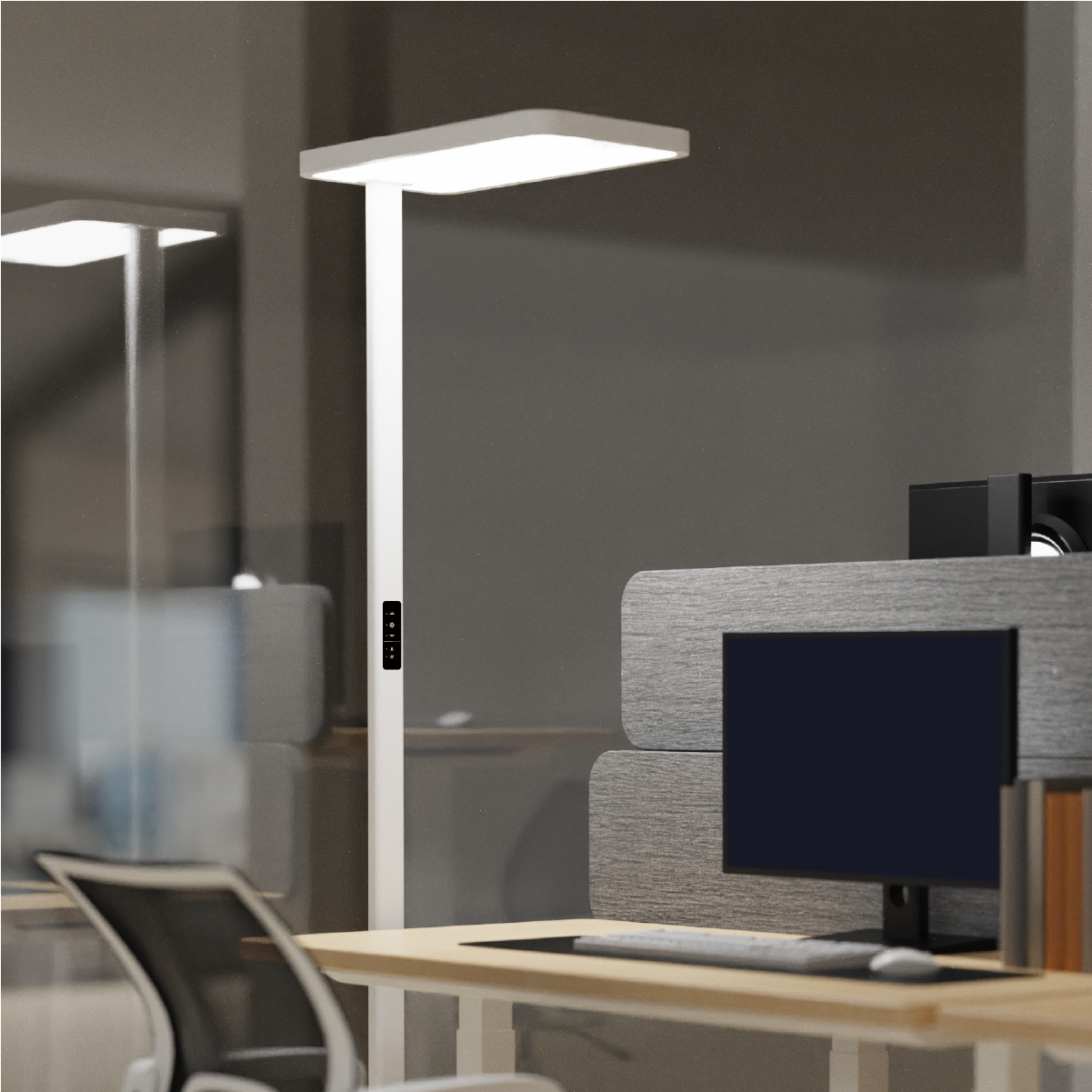Introduction
In any workplace, be it a traditional office cubicle, a bustling open - plan workspace, a home office, or a specialized environment like a library or a research facility, proper lighting is of utmost importance. Among the various lighting solutions available, workplace reading lamps play a critical role in enhancing productivity, reducing eye strain, and creating a comfortable working atmosphere. This comprehensive exploration will delve into the design features, lighting requirements, types, applications, and technological advancements related to workplace reading lamps.
Design Features of Workplace Reading Lamps
Base Design
The base of a workplace reading lamp serves as the foundation, providing stability and often contributing to the overall aesthetic of the lamp. Bases come in a variety of shapes and materials. Circular bases are common as they offer 360 - degree stability. They can be made from heavy - duty materials such as metal or high - density plastic. Metal bases, like those crafted from aluminum or steel, add durability and a sleek, modern look. Aluminum bases, being lightweight yet sturdy, can be finished in different ways. A brushed aluminum finish gives a contemporary, industrial feel, while a polished one exudes elegance. Weighted circular bases ensure that the lamp remains upright even in areas with potential movement, which is crucial in a busy workplace.
Square or rectangular bases are also prevalent, especially in more space - saving designs. These bases can be placed neatly against desks or in corners, making them ideal for workstations where space is limited. Some bases are designed with additional functionality. For example, there are bases with built - in storage compartments, which can be used to store small office supplies like pens, paperclips, or sticky notes. Others may have integrated cable management systems, helping to keep the area around the lamp clutter - free.
Arm and Gooseneck Design
The arm or gooseneck of a workplace reading lamp is a key design element that allows for flexibility in positioning the light source. Adjustable arms can be made of metal or high - quality plastic. Metal arms, such as those made of steel, offer strength and durability, while plastic arms are often more lightweight and can be more easily adjusted. Some arms are multi - jointed, providing a wide range of movement. This enables users to direct the light precisely where it is needed, whether it's onto a book, a document, or a computer screen.
Gooseneck lamps, in particular, are highly popular in workplace settings. The flexible, coiled gooseneck can be bent and twisted into various shapes, allowing for extremely precise positioning of the light. This is especially useful for tasks that require focused lighting, such as reading fine - print documents or working on detailed projects. The length of the arm or gooseneck also varies. Longer arms are suitable for larger workspaces or for reaching over multiple items on a desk, while shorter arms are more compact and better suited for smaller workstations.
Lamp Head Design
The lamp head of a workplace reading lamp houses the light source and is designed to optimize light distribution. Lamp heads can have a simple, circular shape for a basic and functional appearance. This type of lamp head is often used in traditional or minimalist - style reading lamps. In more modern designs, lamp heads may feature angular or geometric shapes, adding a contemporary and eye - catching element. Some lamp heads are adjustable, allowing users to pivot or tilt the light source to direct the light exactly where it is needed. This is particularly useful for tasks such as reading at an angle or illuminating a specific area on a computer screen.
The lamp head may also incorporate features to enhance the quality of light. For example, some lamp heads have built - in diffusers or reflectors. Diffusers help to soften the light, reducing glare and making it more comfortable for the eyes. Reflectors, on the other hand, are designed to direct the light in a specific direction, increasing the intensity of the light on the target area. The size of the lamp head can also vary. Larger lamp heads may be used in lamps designed for illuminating larger areas, such as multiple pages of a document or a group of reference materials, while smaller lamp heads are more suitable for focused, single - item lighting.
Lighting Requirements for Workplace Reading Lamps
Light Source Options
The choice of light source in a workplace reading lamp has a significant impact on its performance and energy consumption. Traditional incandescent bulbs were once commonly used in reading lamps. However, they have several drawbacks. Incandescent bulbs are highly inefficient, converting a large amount of energy into heat rather than light. They also have a relatively short lifespan, typically lasting only a few thousand hours. Additionally, the light they emit has a yellowish - orange tint, which may not be ideal for reading, especially for long periods, as it can cause eye fatigue.
Compact fluorescent lamps (CFLs) emerged as a more energy - efficient alternative. CFLs use about 75% less energy than incandescent bulbs and have a longer lifespan, often lasting around 8,000 - 10,000 hours. However, CFLs contain mercury, which poses environmental risks during disposal. The light emitted by CFLs can also have a somewhat harsh or unnatural quality, which may not be conducive to a comfortable reading environment.
Light - emitting diodes (LEDs) have revolutionized the lighting industry and are now the most popular light source for workplace reading lamps. LEDs are extremely energy - efficient, consuming far less power than incandescent or CFL bulbs. They can last up to 50,000 hours or more, reducing the need for frequent bulb replacements. LEDs also offer a wide range of color temperatures, from warm white (around 2700K - 3000K), which mimics the soft, yellowish light of a traditional incandescent bulb and creates a cozy atmosphere, to cool white (around 5000K - 6500K), which is more similar to daylight and is great for tasks that require concentration, like reading. High - quality LEDs also have a high color rendering index (CRI), meaning they can accurately represent the colors of objects in the room, which is important for reading documents with colored text or images.
Dimming and Color - Tuning Features
Many modern workplace reading lamps come equipped with dimming and color - tuning capabilities, adding a high level of flexibility to their lighting output. Dimming allows users to adjust the brightness of the light according to their needs and the lighting conditions in the workplace. For example, in a brightly lit office during the day, the reading lamp can be dimmed to reduce eye strain, while in the evening or in a dimly lit area, it can be brightened to provide sufficient illumination. Some advanced models offer stepless dimming, ensuring a seamless transition between different brightness levels without any visible jumps or flickers.
Color - tuning is another valuable feature. It enables users to change the color temperature of the light. This is extremely useful as different color temperatures can have different effects on the reading experience. A warm white light is great for relaxation and may be suitable for reading less - demanding materials or during breaks. A cool white light, on the other hand, can enhance concentration and is more appropriate for reading complex reports or doing detailed work. The ability to customize the light based on the task at hand and the time of day can significantly improve the user's comfort and productivity.
Types of Workplace Reading Lamps
Desk - Mounted Reading Lamps
Desk - mounted reading lamps are a popular choice in workplaces. They are attached directly to the desk, either through a clamp or a mounting bracket. This type of lamp is space - saving, as it doesn't take up additional surface area on the desk. Desk - mounted reading lamps often have adjustable arms or goosenecks, allowing users to position the light source precisely over their work area. They can be easily adjusted to different angles, making them suitable for reading documents, working on a computer, or using a tablet. Some desk - mounted reading lamps also come with additional features such as built - in USB ports, which can be used to charge electronic devices, or magnifying glasses, which are useful for reading small print.
Floor - Standing Reading Lamps
Floor - standing reading lamps are another type of workplace reading lamp. They are taller and stand on the floor, making them suitable for larger workspaces or for providing light to multiple users. Floor - standing reading lamps often have a wider base for stability and a long, adjustable arm or gooseneck. The height of the lamp can be adjusted, allowing users to direct the light at different levels. These lamps are great for reading in areas where there is no available desk space, such as in a library reading nook or in an open - plan office where employees may need to read while standing or sitting in a lounge area. Floor - standing reading lamps can also be used to provide additional light to a workstation, especially in areas with poor overhead lighting.
Clip - On Reading Lamps
Clip - on reading lamps are a convenient and portable option for workplaces. They can be clipped onto the edge of a desk, a book, or even a computer monitor. Clip - on reading lamps are often lightweight and have a small, adjustable lamp head. They are ideal for situations where space is limited or where users need to move the lamp around frequently. For example, in a shared workspace, a clip - on reading lamp can be easily moved from one workstation to another. Some clip - on reading lamps are battery - powered, which makes them even more portable, as they can be used without the need for a nearby electrical outlet.
Applications of Workplace Reading Lamps
Office Environments
In traditional office environments, workplace reading lamps are essential for employees who spend a significant amount of time reading documents, reports, or contracts. A well - placed reading lamp on a desk can provide focused illumination, reducing eye strain and improving productivity. In open - plan offices, where overhead lighting may not be sufficient for individual tasks, reading lamps can be used to create a personal, well - lit work area. The dimming and color - tuning features of these lamps can be adjusted to match the overall lighting conditions in the office and the user's preferences.
In corporate boardrooms, reading lamps can be used by executives and employees during meetings to read important documents or presentations. The ability to adjust the light intensity and color temperature can help to create a more professional and comfortable atmosphere. In addition, some reading lamps with adjustable arms can be positioned to direct light onto a whiteboard or a projection screen, making it easier for everyone in the room to see the information being presented.
Home Offices
With the increasing trend of remote work, home offices have become a common workplace setting. Workplace reading lamps are crucial in home offices for providing proper lighting for reading, writing, and working on a computer. A reading lamp placed next to the desk can help to create a dedicated work environment, separating the work area from the rest of the home. The adjustable features of the lamp can be used to adapt to different lighting conditions in the home, such as natural light coming in from windows. For example, during the day, the lamp can be dimmed if there is sufficient natural light, while in the evening, it can be brightened to provide adequate illumination for continued work.
Libraries and Research Facilities
In libraries, workplace reading lamps are used by students, researchers, and general readers. They are placed at individual study carrels, tables, and reading nooks. Reading lamps in libraries need to provide a high - quality, glare - free light to ensure a comfortable reading experience. The dimming feature can be used to adjust the light intensity based on the time of day and the number of people using the library. In research facilities, reading lamps are essential for scientists and researchers who need to read technical reports, research papers, and experimental data. The high CRI of the light source in these lamps is crucial for accurately interpreting colored graphs, charts, and images in research materials.
Technological Advancements in Workplace Reading Lamps
Smart Lighting Integration
The integration of smart lighting technology has significantly enhanced the functionality of workplace reading lamps. Many modern reading lamps can be connected to a home or office network and controlled via a smartphone app or voice - controlled assistants like Amazon Alexa or Google Assistant. This smart lighting integration allows for remote operation, enabling users to turn the lamp on or off, adjust the brightness and color temperature, and even set schedules from anywhere within the range of their network.
For example, a user can program the reading lamp to turn on automatically at a certain time in the morning, gradually increasing the brightness to wake them up gently. The lamp can also be synchronized with other smart home or office devices. For instance, it can be set to turn off when the user leaves the office, or it can adjust its lighting based on the ambient light sensors in the room. Smart - enabled reading lamps can also be grouped together with other smart lights in the workplace, allowing for coordinated lighting control.
Energy - Saving Technologies
Workplace reading lamps are increasingly incorporating energy - saving technologies. As mentioned earlier, the use of LED light sources is a significant step in this direction. LEDs consume far less energy than traditional light sources, reducing electricity bills and environmental impact. In addition to LED technology, some reading lamps are equipped with motion sensors. These sensors can detect when a user is present in the work area and turn the lamp on automatically. When the user leaves the area, the lamp can be programmed to turn off after a certain period, saving energy.
Another energy - saving feature is the use of daylight - harvesting technology. Some reading lamps are designed to adjust their brightness based on the amount of natural light available in the room. If there is sufficient natural light, the lamp can automatically dim or turn off, and when the natural light fades, it can brighten to maintain a consistent level of illumination. This not only saves energy but also provides a more comfortable and natural - feeling lighting environment.
Conclusion
Workplace reading lamps are an essential component of any well - equipped workplace. Their design features, lighting requirements, and technological advancements make them highly versatile and user - friendly. Whether in an office, a home office, a library, or a research facility, these lamps play a crucial role in enhancing productivity, reducing eye strain, and creating a comfortable working atmosphere. As technology continues to evolve, we can expect to see even more innovative workplace reading lamps that will further improve the way we work and read in our professional environments. The combination of style, functionality, and energy - efficiency in these lamps ensures that they will remain a popular choice for workplaces of all types.



